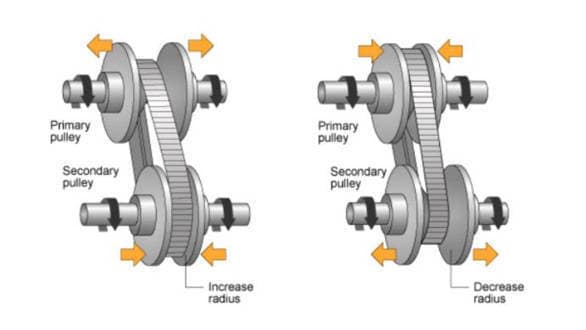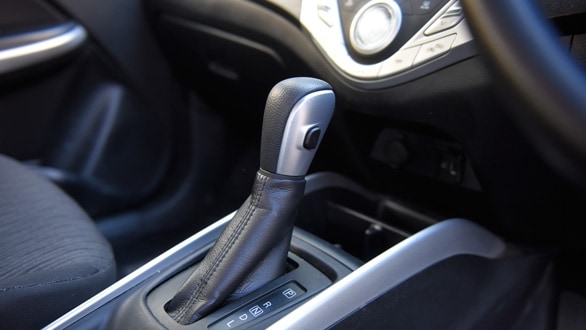How a CVT works - Everything you need to know about Continuously Variable Transmission
If there has to be just one fact about the Continuously Variable Transmission (CVT) that will instantly make you sit up and take notice, it's that it was tested in a Williams Formula 1 car in the early 90s and that it was said to be almost two seconds quicker around a lap than a manual transmission F1 car!
And now that we have your attention, let's get to understanding how CVT works.
This automatic transmission, instead of an automated gearbox, uses two pulleys of variable diameter connected by a belt. One pulley is turned by the engine, while the other is connected to the differential to run the wheels.

Smooth and Comfortable
CVT uses two pulleys having variable diameters that help the transmission achieve infinite gear ratios. Thanks to this, the flow of power from the engine to wheels is continuous and uninterrupted. With no mechanical gears & shafts, the speed transition is smooth while accelerating or de-accelerating. All of this means an effortless driving experience with a lot of comfort.
Superb Performance
In the CVT technology, there is a Transmission Engine Controller Unit in place to operate this hydraulic system. The function of this hydraulic system is to control the motion of one pulley to achieve the required speed ratio. The change of speed is managed by the cone-pulley position change which is gradual and smooth.
An easy visualisation is a set of two diametrically opposed cones, where the belt is always moving between the thick end and narrow end of the two cones to keep the engine in its optimum operating RPM (revolutions per minute). This gives the desired acceleration and power whenever you need it. Hence, you get both superior performance and matchless comfort.
Fuel Efficiency
In effect, a CVT has an unlimited number of gear ratios. This means that the engine will always be running at the most efficient RPM, for any given speed. And since the engine is allowed to operate in the highest possible efficiency band, it delivers enhanced fuel efficiency in different driving conditions.

CVT for yourself
The best engineering never lets you know just how much work the mechanical parts are doing to give you a smooth drive, and in that respect, the CVT available in the Maruti Suzuki Baleno is right up there with the best. A smooth transmission mated with a smooth 1.2L VVT petrol engine really is the perfect match. Maruti Suzuki has optimized its CVT technology to deliver comfort, fuel efficiency as well as driving pleasure.
Know more about the CVT technology by visiting the Automatic page on the Maruti Suzuki official website.
Starts Rs 6.35 Lakhs
1197cc
Manual
90
113
22.94 Kmpl














